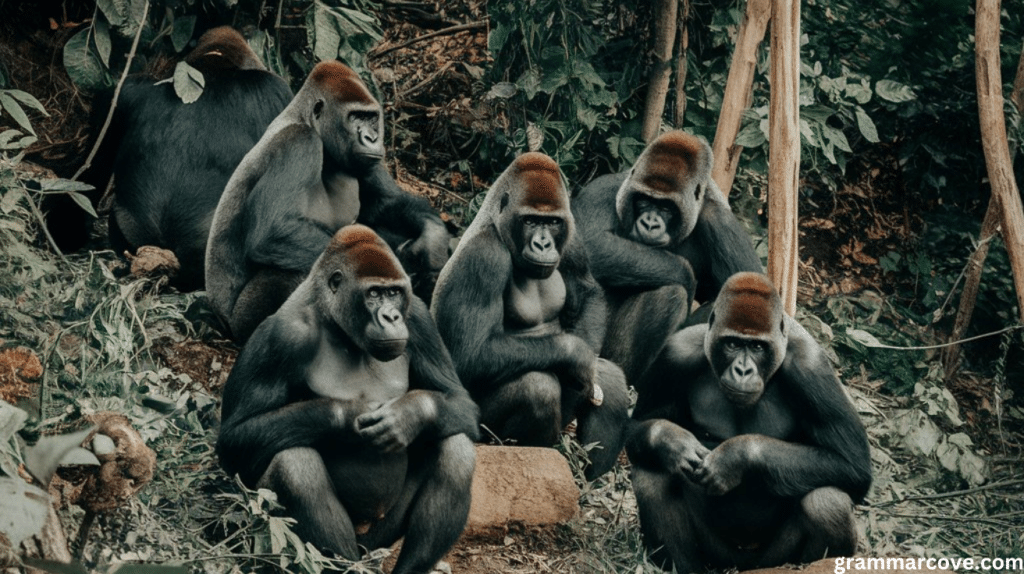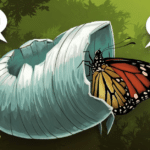When it comes to the animal kingdom, understanding the right collective nouns to use for different species can enhance our appreciation of their unique characteristics. The word “gorilla” often brings to mind images of majestic primates living in the dense forests of Africa. But have you ever wondered what term describes a group of these magnificent creatures? In this article, we’ll explore the collective nouns used for gorillas, their social behavior, and other fascinating details about their lives in the wild.
Common Collective Nouns for Gorillas
In the English language, collective nouns are used to refer to groups of specific animals. When it comes to gorillas, there are several terms that can describe their group dynamics. The most common collective nouns used are:
- Band of gorillas
- Troop of gorillas
- Family of gorillas
- Group of gorillas
Each term provides a glimpse into the unique social structure and behavior of gorillas in the wild. Let’s delve into these terms and see how they reflect the lives of these creatures.
Band of Gorillas
A band of gorillas refers to a loosely organized group that may form temporarily, often around a dominant silverback. This term is sometimes used when multiple smaller groups come together for specific activities like foraging. Although the groups may disperse after such activities, the banding together serves a purpose in maintaining ecosystem balance and facilitating social interactions.
Scenario Example: Imagine you’re writing an email to your colleague, Emily, about your recent trip to Africa for wildlife research:
“Hi Emily,
I just got back from the research trip in Uganda, and I must share the most fascinating part with you. We observed a band of gorillas gathering near a river for foraging. It was incredible to see the different groups interact, and the dominant silverback kept a close eye on the youngsters while the others explored. I can’t wait to share more details at the next team meeting.”
Troop of Gorillas
The term troop of gorillas is the most commonly used collective noun for these primates. It highlights their organized and stable group structure, typically consisting of one dominant silverback, several adult females, and their offspring. The troop is a cohesive unit where members engage in activities such as grooming, foraging, and protecting their territory from other groups of gorillas.
Scenario Example: Consider writing a blog post about gorilla behavior:
“While studying the social dynamics of a troop of gorillas, we noticed the prominent role of the dominant silverback. He not only led the foraging trips but also played a crucial role in maintaining group cohesion through grooming and territorial displays. This type of organization is vital for ensuring the longevity of gorillas in their natural habitat.”
Family of Gorillas

A family of gorillas describes a close-knit social unit, often consisting of a dominant silverback, several females, and their young. This term emphasizes the strong bonds within the group, as gorillas are known for their nurturing nature and playful behavior with one another. The family engages in foraging, grooming, and even playful behavior, which helps young gorillas learn important social skills.
Scenario Example: Imagine writing a report on a wildlife observation:
“During our recent trip to the Virunga Mountains, we encountered a family of gorillas. The younger members were displaying playful behavior, swinging from tree branches while the adults kept watch. It was heartwarming to see the little ones engaging in rough-and-tumble play, which is a critical part of their development and helps maintain the cohesive units of the group.”
Group of Gorillas
A group of gorillas is a more general term used to describe any assembly of these primates, regardless of the exact social structure. It can include smaller clusters of gorillas that come together for short-term interactions or larger organized groups such as a troop or family. The term “group of gorillas” is versatile, fitting for various settings in both captivity and the wild.
Scenario Example: Picture writing a research article:
“The observed group of gorillas showed remarkable social dynamics, engaging in both grooming and vocalizations. Even though the dominant silverback was in charge, younger members were also displaying territorial behaviors. These observations provide insight into the complex social structure and biological traits of gorillas.”
Exploring the Social Structure and Behavior of Gorillas
The use of different collective nouns reflects the intricate social dynamics and behaviors seen in gorillas. These primates are highly social creatures with a complex social structure, where the dominant silverback plays a crucial role in leading and protecting the group. The silverback leads activities like foraging and defends the group against potential threats, while the females and young gorillas participate in activities like grooming, playful behavior, and learning from their elders.
Communication and Vocalizations
Gorillas use various methods of communication, including vocal sounds, body language, and even facial expressions. Their vocalizations can range from grunts and barks to more complex sounds that indicate different emotions or intentions. This form of communication helps maintain group cohesion and allows gorillas to express themselves during territorial displays, foraging, and social interactions.
Scenario Example: If you’re giving a presentation:
“In terms of communication, gorillas exhibit a wide range of vocalizations to express their emotions and intentions. For instance, a loud bark may serve as a warning to other groups of gorillas nearby, while soft grunts are commonly used during grooming sessions to reassure one another.”
Foraging and Herbivorous Diet
The herbivorous diet of gorillas is primarily composed of leaves, stems, fruit, and occasionally small insects. Foraging is a central activity within a gorilla group, providing not only sustenance but also social interaction. During foraging trips, the dominant silverback leads the way, with the rest of the group following closely. This shared activity strengthens bonds within the family of gorillas and ensures everyone gets their share of food.
Scenario Example: In a wildlife photography caption:
“This stunning image captures a band of gorillas during their daily foraging expedition. Notice how the youngsters stick close to their mothers while the dominant silverback leads the way. Their herbivorous diet consists mainly of the lush foliage found in this part of the forest.”
The Role of the Dominant Silverback
The dominant silverback is central to the social structure of a troop of gorillas. He is the leader, protector, and primary decision-maker. His responsibilities extend beyond ensuring the group’s safety; he also oversees mating, foraging, and conflict resolution within the troop. The presence of a strong dominant silverback often determines the stability of the group of gorillas.
Scenario Example: In a documentary script:
“The role of the dominant silverback cannot be understated. As the leader of the troop of gorillas, he ensures the group’s safety while coordinating activities like foraging and territorial displays. His presence is crucial for the well-being and longevity of gorillas within his domain.”
Interesting Biological Traits and Behavior of Gorillas
Understanding the biological traits and behaviors of gorillas can offer valuable insights into their role in the natural world. They are not just large, gentle giants; they possess complex social structures, emotional depth, and strong family bonds. These characteristics play a crucial role in maintaining ecosystem balance in the regions where they live.
Playful Behavior and Social Learning
Gorillas engage in playful behavior as a way to learn social skills, develop physical strength, and establish bonds with other members of their group. This behavior is most commonly observed in younger gorillas, who learn essential survival skills and the social norms of the troop through play.
Scenario Example: In an article for a wildlife magazine:
“The playful antics of young gorillas are not just for fun; they serve an important purpose in developing social skills. Through playful behavior, young gorillas learn how to interact with each other, follow group rules, and recognize the role of the dominant silverback. Such behaviors are crucial for their growth and the stability of the family of gorillas.”
Conclusion
The terms band of gorillas, troop of gorillas, family of gorillas, and group of gorillas each reflect the unique social dynamics and behaviors of these incredible creatures. By understanding these collective nouns, we gain deeper insights into the behavior of gorillas, from their complex social structure and leadership roles to their nurturing nature and herbivorous diet. The use of these terms not only enhances our language but also helps in appreciating the depth of wildlife and the role of gorillas in maintaining ecosystem balance.
Understanding the social fabric of gorillas reminds us that these creatures, often so closely related to us, live in highly cohesive units with intricate behaviors and emotional connections. Let’s continue to learn from and protect these remarkable beings, who play a crucial role in our shared natural world.

Steel Morgan is an experienced blogger passionate about language and writing. On Grammarcove. he shares his expertise in grammar, punctuation, and effective communication, making complex rules simple and accessible for readers. With a knack for clear explanations and engaging content, Steel aims to help others master the art of language.







